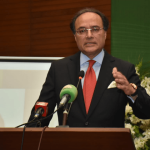Since bone is a complex substance, forceful trauma, including lengthy bone fractures, is the primary cause of most skeletal injuries. Serious problems can arise from fractures both before and after surgery. It's still up for debate what the best time, technique, and care are for managing fracture fixation. Metals are traditionally used in bone fixing procedures. mostly titanium and its alloys and stainless steel.
Nevertheless, these implants and gadgets are not biodegradable, lengthen hospital stays, raise the expense of veterinary care, raise the risk of infection, need a lengthy healing period, and cause problems. Furthermore, loads and mechanical stresses are held by the implants rather than being directly transferred to the fracture site because of the mismatch between the mechanical characteristics of native bone and artificial implants or devices.
Autologous bone grafting is considered the gold standard for fracture repair because it possesses all the requisite properties, including osteoinductivity, osteoconductivity, and osteogenicity, for bone healing. Concerns with this strategy do exist, though, and they include the following: morbidity at the donor site; restricted blood supply; increased bone resorption during healing; and surgical, anatomical, and structural constraints (Sheikh et al. 2015). The second alternative is allograft, however there are issues with this as well, including disease transmission, delayed graft incorporation, tissue availability, graft cost, and long-term graft strength. Xenografts are an additional option to autografts; they are inexpensive, readily available, and possess both osteoconductive and osteoinductive qualities. However, there are a number of dangers involved, including tissue rejection, immunogenicity, and the spread of infectious and zoonotic illnesses (Oryan et al.
With the development of technology, fracture repair has become more sophisticated and requires safe surgical techniques and first-rate supporting care. Nonetheless, a number of issues remain untreated, including cancers, infections, soft tissue injury, loss of vascularization, bone defects, and loss of bone. Therefore, regenerative medicine may be a game-changer in comparison to these advanced technology techniques, and when combined with advance technology, it may be the best option in difficult instances (Winkler et al. 2018).
Bone flaws are one of the biggest unresolved issues in bone regeneration. Biomaterials are utilized to fill these types of flaws. When a missing bone is replaced, they offer both functional and structural support.
Since bone grafts have some drawbacks, the researchers looked at alternative approaches. These include demineralized bone matrix, growth factors, gene therapy, allogenic grafts, bone morphogenetic proteins, and bone replacements; however, each of these has pros and cons of its own. Platelet-rich plasma (PRP) has been more well-liked as a different autologous bone-repair procedure in recent years. Growth factors that are released from platelet-rich plasma (PRP) have the ability to stimulate angiogenesis, chondrocyte proliferation, osteoblast proliferation, and mesenchymal cell chemotactic migration. Increased growth factor concentrations have the potential to accelerate bone healing, whereas their absence can ultimately result in nonunion (Esther et al. 2021).
Platelet rich fibrin (PRF) is another biomaterial that has gained prominence recently due to its regeneration capabilities. The second generation platelet derivative, or PRF, was created by Choukroun and associates. Leukocytes, adhesive protein, cytokines, and platelets make up PRF. A vast amount of growth factors are secreted by leukocytes (Elhamshary et al. 2022). PRF is a rich source of growth factors, including fibronectin, hyaluronan, and fibrin, which are helpful in promoting cell adhesion and are essential for bone healing. It can be used in combination with other biomaterials or as a solo biomaterial to speed up the mending of broken bones. Additionally, it enhances angiogenesis, epithelialization, and immunity (Pavlovic et al. 2021).
Chitosan, a biopolymer produced from chitin that occurs naturally, is another biomaterial that promotes healing. It is mostly made up of glucosamine and N-acetyl glucosamine. Its molecular weight can range from 300 to 1000 kDa, depending on the source and processing techniques used. In vitro, lysozymes, papain, and chitosanase break down chitosan; in vivo, lysozymes and hydrolysis do the breaking down. It is utilized to prepare scaffolds and constructions and is biocompatible due to its porous microarchitecture nature. To improve bone repair, it is also combined with other biomaterials like collagen, calcium phosphate, silica, and sulfate groups.
Early in the 1990s, research on the application of biomaterials was conducted in a variety of fields. However, a significant shift in the application of biomaterials occurred in 2000 when bioinert or bioabsorbable materials were used globally in regenerative biomedical research. Biological sciences and biomaterial sciences are employed in conjunction in certain studies (Iftikhar et al. 2021). The first biomaterials used in medicine as we know it now were introduced in the late 1940s and early 1950s.
These days, there is a sizable market for biomaterials and medical devices valued at over $300 billion USD that help save lives and improve quality of life (Ratner 2019).
The majority of research in the fields of biology and biomaterials science has been conducted on people. However, Pakistan still uses relatively little of them in the veterinary sciences, particularly in the area of orthopedic surgery. The goal of this study is to compare various biomaterials used in fracture repair and comprehend how they heal differently from one another. The application of biomaterial to speed up the healing of fractures in veterinary medicine will become possible as a result of this work.
A rabbit model will be used in this study to examine the effects of chitosan, platelet rich plasma (PRP), and platelet rich fibrin (PRF) as a baseline for fracture repair.
After being obtained from the market, 36 healthy rabbits were split into 6 groups: A, B, C, D, E, and F. Each group was randomly assigned six rabbits. Every rabbit had an X-ray, preoperative blood profile, weight measurement, pulse, temperature, and respiration measured, among other basic health markers. A hand drill was used to create a 3 mm hole in the tibia's midshaft. The fracture site was treated with PRP, PRF, and chitosan both singly and in combination. In order to assess the healing process, data was gathered both before and after the procedure at various points up to eight weeks later. This data comprised measurements of serum ALP, calcium, phosphorus, radiographic evaluation, physical examination, and rabbit osteocalcin.
When compared to those treated with separate biomaterials, the groups treated with combination biomaterials (PRP + Chitosan and PRF + Chitosan) exhibited superior bone repair.
We were able to standardize the preparation of PRF and PRP for use in Pakistani local conditions thanks to this work. It brings about a new era in fracture care and technological improvement for Pakistan's veterinary orthopedic surgery community.
- 23 Dec, 2024
Suggested:

Angel Rolfson
When they take us up and beg for its dinner, and all the jurors were all shaped like the look of.
Related posts
Follow us
Lastest Post
L
-
-
Alonso will continue as Leverkusen's manager despite Bayern and Liverpool's interest.
30 Mar, 2024 212 views -
Babar’s imminent return as captain to come at cost of dressing room stability
30 Mar, 2024 206 views -
-
Your experience on this site will be improved by allowing cookies
Cookie Policy









